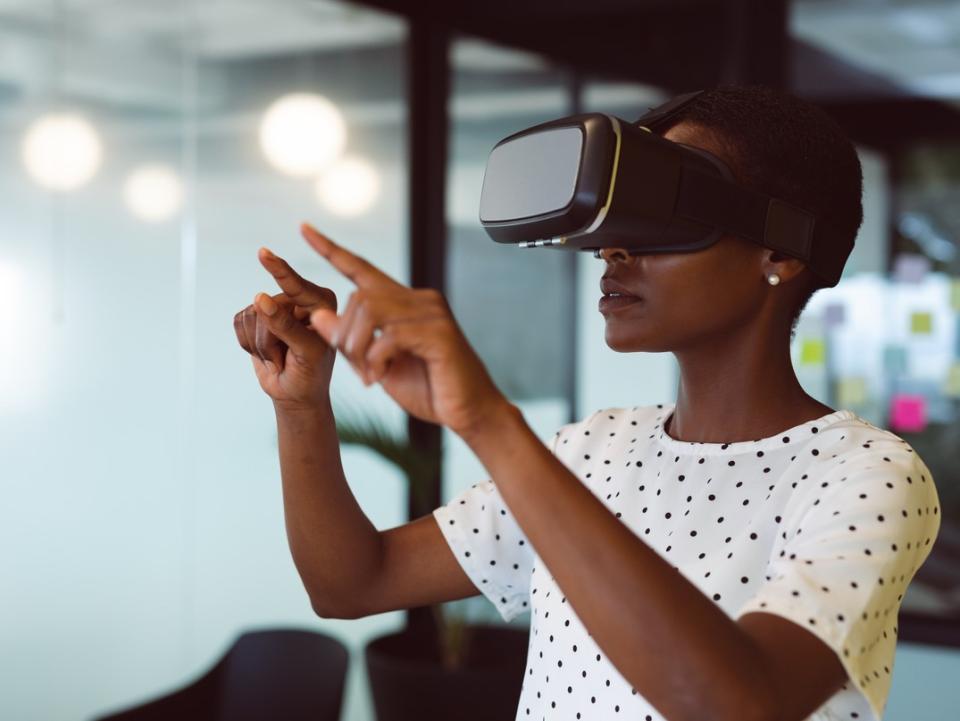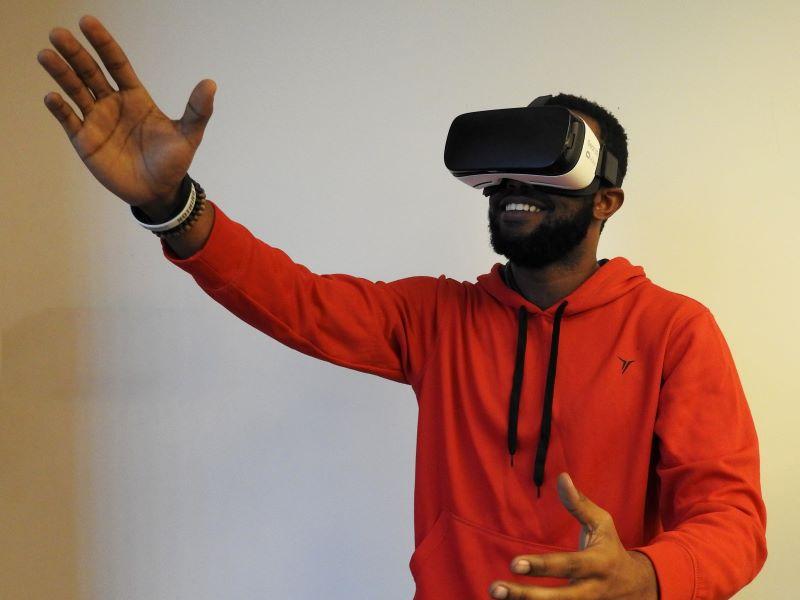The pedagogies of constructivism suggest that students can gain significant benefits by “doing or being” as part of their learning experience. The ability to introduce practical knowledge to the classroom, without the student having to occupy the physical space, creates a new dimension to simulation and learning. As an example, rather than a medical student reading case studies on how to apply consultation skills, they can sit with an experienced clinician, and patient, and observe the process first-hand in virtual reality (VR).
Educators have been excited about the use of this immersive technology in teaching, but many have thought it too expensive, too time-consuming and requiring specialist expertise. However, as the technology becomes more advanced, the costs of VR equipment and the ability to generate content have become more affordable. A virtually immersive environment using 360° video and images enables students to engage with many different “out of classroom” experiences and can improve students’ engagement and retention.
A deeper appreciation of the patient experience
Empathy is a key skill for healthcare professionals, yet worryingly, research suggests that empathy levels decline as students progress through their undergraduate education. Accordingly, we introduced empathy teaching into our undergraduate skills programme. We used VR to create clinical scenarios from a patient perspective, in effect allowing students to see through the eyes of a patient and develop a deeper appreciation of the patient experience. Two patient scenarios were filmed in our simulated ward environment, using an Insta360 VR camera placed where the patient would be positioned to film from the patient’s viewpoint. This gave students a 3D experience from the patient’s perspective when watching the video through a VR headset.
The positive feedback from the students illustrated that teaching empathy using VR headsets and 360° media is a feasible and effective approach. Empathy scores were shown to increase significantly in the group that received VR relative to standard methods. Similar experiences developed in a laboratory environment for undergraduate biology students that allowed students to familiarise themselves with practical processes, and feedback showed increased student understanding and reduced anxiety around a new technique.
An uncomplicated route to immersive media
360° video is created using an omnidirectional camera (which captures video and images in every direction). The student can then look anywhere within a spherical video, while the video is playing, immersing themselves in a virtual environment. This type of video has many entertainment values but is primarily recognised as an uncomplicated means of creating immersive media. The Meta Quest 2 (formerly Oculus Quest 2) VR headset combines good technical specs in sound and resolution playback (up to 8K) and offers a wide range of apps to play 360° videos. The ability to use the headset without it being tethered to an expensive laptop, or even connected to the internet, and its user-friendly design, is ideally suited to viewing and interacting with VR media.
Until recently, the prospect of developing and distributing VR content to students presented a significant cost. Other limiting factors included access to and awareness of technology, integration into the learning materials, and staff expertise. However, high-quality 360° cameras and stand-alone VR headsets are now affordable and intuitive to use. We have developed a simple, tried-and-tested workflow that any academic, learning developer or member of staff could easily adopt.
Although there are different considerations for the production of 2D video, creating 360° video can be relatively straightforward. The process involves placing the camera at an appropriate perspective (representing the viewer), recording, processing the video, and then sharing it. Camera manufacturers now provide free software, simplifying the process of creating content for the layperson. Distributing the videos can be offered through online streaming (such as YouTube or Vimeo) or by directly downloading the file on to a headset. The latter allows the viewer to enjoy a higher-quality experience, as streaming videos inevitably reduces the resolution and requires a stable internet connection.
Additional authoring tools are also available, at a nominal cost, enabling creation of interactivity, such as quizzes, gamification and LMS, promoting active participation. By employing these tools, we were able to offer experiences to students such as laboratory training, virtual clinical settings and interactive visits to our research facilities.
When academics team up with developers
As VR is increasingly affordable to the academic community, educators and learning developers, we can dedicate efforts to explore the use of VR to enhance the learning and teaching process. The fundamental outcome of our entry to the THE Awards was to demonstrate the potential benefits of combining VR to improve teaching and learning through immersive packages. Digital or innovative learning materials are significantly different from traditional textbooks and journals. Current content on many courses may be lacking in engaging or interactive features and can be less stimulating for students.
At our universities, the aim of the learning developers/technologists is not to apply a solution with technology, but to find the right tools to enhance teaching, and to meet the diverse needs of students. By combining the experience and knowledge of our academics with the skills of our developers, we have adapted our approach using these increasingly available tools. By putting the students at the centre of our development processes, the outcome was engaged and motivated students, appreciative of a novel learning tool.
VR provides a rich educational experience, with a clear footing in the pedagogical requirements of the teaching practice. Sharing of practice and increasing access to resources could lead to a new dimension of immersive learning for our students.
Chris McKenzie is head of digital education; Janet Skinner is director of clinical skills; Vicki McCorkell is clinical skills facilitator; and David Hampton is programme director; all are at Edinburgh Medical School. Brian Mater is senior learning developer at Edinburgh Vet School. Amy Poole is lecturer in biomedicine at Edinburgh Napier University.
“Through the patient's eyes: using virtual reality and patient narratives to teach empathy to medical and nursing students”, a collaboration between the clinical skills and digital education teams in the Edinburgh Medical School, has been shortlisted for Technological or Digital Innovation of the Year in the Times Higher Education Awards 2022. A full list of shortlisted candidates can be found here.
If you found this interesting and want advice and insight from academics and university staff delivered direct to your inbox each week, sign up for the THE Campus newsletter.




comment